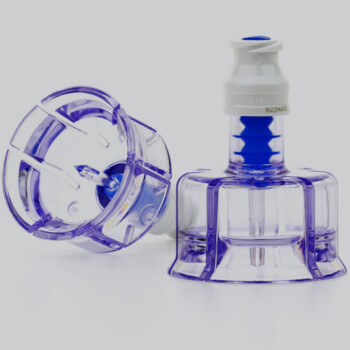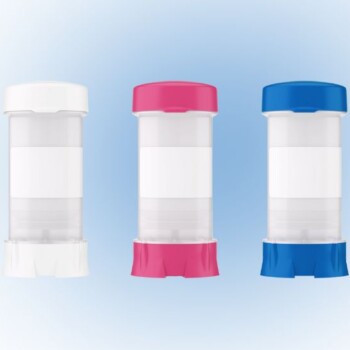Article Summary
Understanding osmolarity is vital for IV therapy safety. It influences cellular hydration, with solutions categorized as isotonic, hypertonic, or hypotonic based on their tonicity. Monitoring osmolarity, especially in IV solutions administered through smaller veins, is crucial to prevent complications.What Is Osmolarity?
Osmolarity is defined as the total number of solute particles per liter of a specific solution. It is expressed as milliosmoles per liter (mOsmol/L) or sometimes as milliosmoles per milliliter (mOsmol/mL).
Practitioners administering custom IV solutions should know the total estimated osmolarity of the solution prior to administering it to a patient. Administering a solution that is out of an acceptable range of osmolarity may result in side effects that range from mild to severe.
What Is Tonicity?
Tonicity refers to a solution’s ability to cause water (or another solvent) to move across a semipermeable membrane, such as that of a human cell. If the solution on one side of a membrane has higher osmolarity than one on the other side (and the solute particles cannot pass through the membrane), the water in the lower-osmolarity solution will flow across the membrane until both solutions are of equal concentration. This means that a solution administered intravenously can affect cellular hydration by causing water to flow into or out of cells, which is why a solution that is not within an acceptable osmolarity range may cause side effects.
How Is Tonicity Classified?
Isotonic
An isotonic solution is one that has the same concentration of solute particles per unit volume as another solution with which it is compared. With isotonic fluids, there is no fluid exchange across a semipermeable membrane. Isotonic fluids therefore do not affect the amount of water on the inside of a cell, and there are no shifts in fluids.
Osmolarity range: 250-375 mOsmol/L
Examples:
- Normal saline (0.9% sodium chloride) (NS)
- 5% dextrose in water (D5W)
- Lactated Ringer’s solution (balanced electrolyte solution)
Uses: To increase extracellular fluid volume after it’s lost through blood loss, dehydration, vomiting, diarrhea or surgery.
Hypertonic
A hypertonic solution is one that has a higher concentration of solute particles per unit volume than a comparison solution. Hypertonic solutions cause cells to shrink by making water flow out of the cells (efflux).
Osmolarity range: Above 375 mOsmol/L
Examples:
- D10W and D20W infusions
- Most vitamin/mineral infusions given (may be 500+ mOsmol/L)
Uses: To alleviate hyponatremia or cerebral edema.
Hypotonic
A hypotonic solution is one that has a lower concentration of solute particles per unit volume than a comparison solution. A hypotonic solution causes cells to expand by making water flow into the cells (influx).
Osmolarity range: Below 250 mOsmol/L
Example: 0.45% sodium chloride (1/2 NS)
Uses: When cell becomes dehydrated from diabetic ketoacidosis or hyperglycemia.
How to Determine Osmolarity
There are a few things that need to be considered when calculating an estimated osmolarity of any solution.
If the IV is being administered by drip using a bag containing a base solution, that solution’s osmolarity needs to be determined along with the ingredients being added to it. The three most common base solutions used in IV drips include normal saline, lactated Ringer’s solution and sterile water for injection. Healthcare providers may contact the manufacturer or review the package insert to identify the osmolarity of the base solution.
Next, it is important to determine the estimated osmolarity of each ingredient added to the base solution to calculate the total osmolarity. Commercial IV solutions as well as those made by a 503B outsourcing facility usually include the osmolarity on the product label. Be sure that all the concentrations are in the same units (per L or per mL).
It is best to refer to the latest version of USP Chapter 785 (which covers osmolality and osmolarity) or to another reputable source to learn more about calculating the osmolarity of a solution.
How to Identify Product Osmolarity
Commercially manufactured IV products usually include the osmolarity on the label. Below is an example of a commercial product label with the osmolarity highlighted.

Commercial IV products usually include the osmolarity on the label, such as the one above, which has the osmolarity highlighted.
503B outsourcing facilities can measure the osmolarity of each IV product batch using an osmometer or through a third-party analytical lab. If osmolarity is tested, it will usually be included on the product label. Providers can also contact the 503B outsourcing facility to request a product osmolarity test. Below is an example of a product label from a 503B outsourcing facility with the osmolarity highlighted.

503B outsourcing facilities may include the osmolarity of their IV products on the labels, such as the one above, which has the osmolarity highlighted.
Estimated Osmolarity Ranges for Patients
The table below includes estimated maximum osmolarity thresholds for intravenous therapies based on vein size. They are estimated numbers based on what several experienced practitioners follow, including Dr. W.A. Shrader. When administering an IV with high osmolarity, consider using a larger vein and infusing slowly.
Estimated Osmolarity Ranges for Patients Based on Vein Size[1]
| Large Vein | Medium Vein | Any Vein | |
| IV Push (mOsmol/L) | 1,400 | 950 | 400 |
| IV Infusion (mOsmol/L) | 1,200 | 600 | 400 |
- Shrader WA. The Definitive Guide for Intravenous Therapy With Nutrients. 2015.



